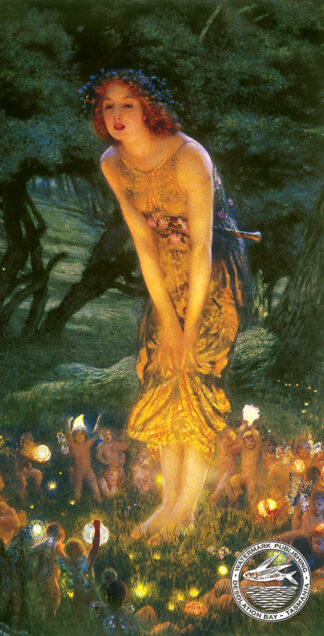HUGHES, Edward Robert

He was born in London in 1849, the only child of Edward and Harriet Hughes. His artistic spirit was nurtured by his uncle Arthur Hughes, one of the most distinguished of the Pre-Raphaelite sympathisers. Edward enrolled at the Royal Academy Schools and being a conscientious and hard working student, benefited greatly from the training and subsequently exhibited at the Royal Academy in 1872.
He befriended Edward Burne-Jones, another pre-eminent Pre-Raphaelite painter and was no doubt influenced by him.
Hughes excelled in portraiture and was attracted to painting themes from Italian literature, featuring diaphanous drapery in characteristic shades of blue in combination with gold and exhibiting an atmosphere of mysticism. He was particularly appreciated in Austria and Germany where several public collections have important examples of his work. He became an Associate of the Royal Watercolour Society in 1891, R.W.S. in 1895 and later, vice-president from 1901-1903. Like many other Victorian artists he had a fanatical devotion to authenticity. He produced many portraits, biblical scenes, Shakespearean themes and was a studio assistant to William Holman Hunt (another famous Pre-Raphaelite). As Hunt’s eyesight was failing, Hughes helped him to complete his celebrated painting ‘The Lady of Shalott’ (1906). As an intimate of the Hunt family, he painted the portraits of son Hilary, daughter Gladys and in 1909, a final portrait of Edith, for her dying husband.
His kindness to young painters was well known and he was a much loved and highly respected lecturer for the London County Council. In 1913 he moved to St.Albans where he died on 23rd April 1914, following an unsuccessful operation.
Showing the single result
Showing the single result

